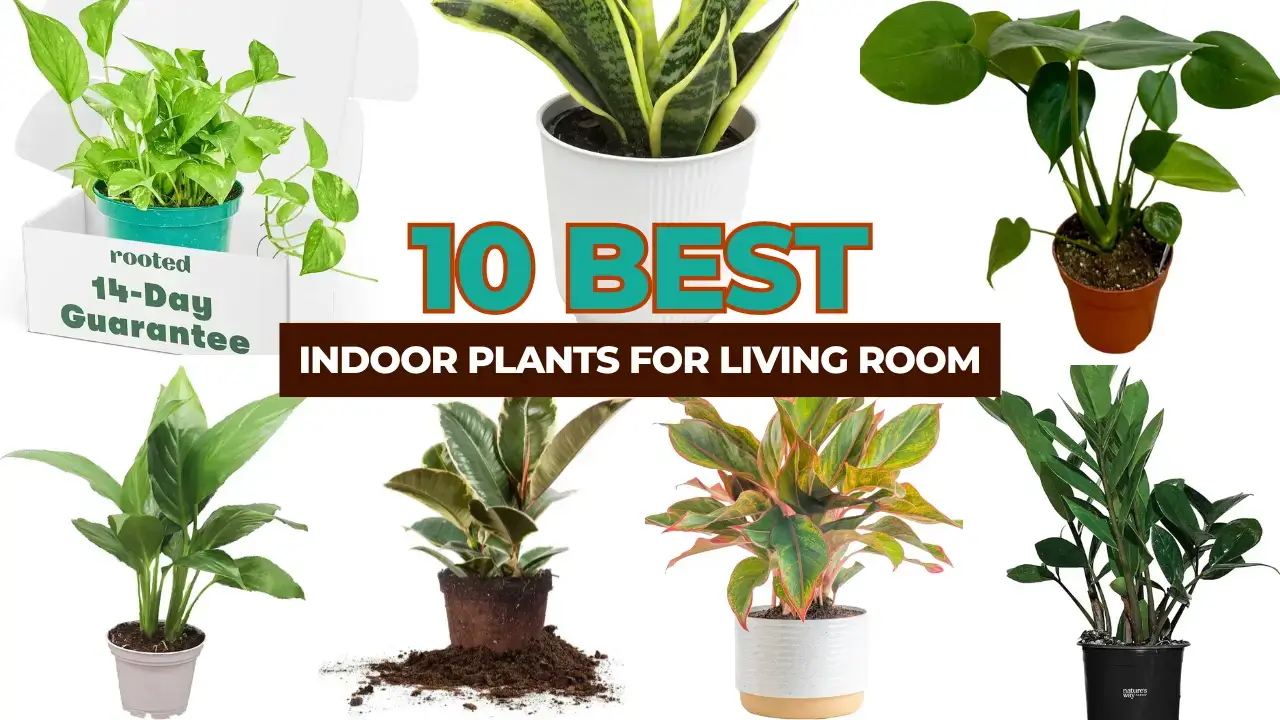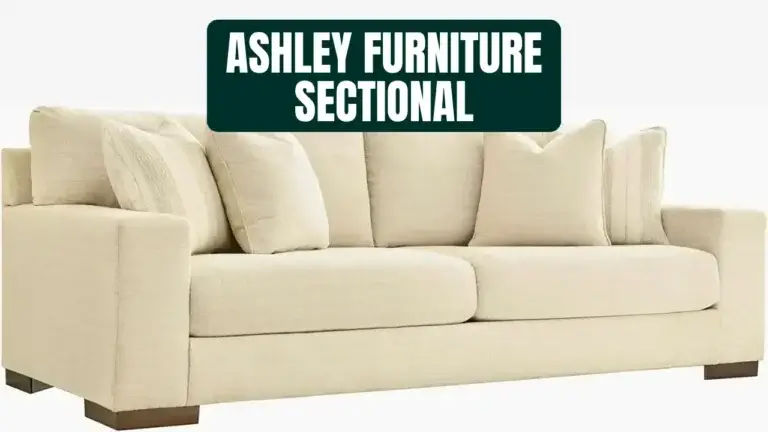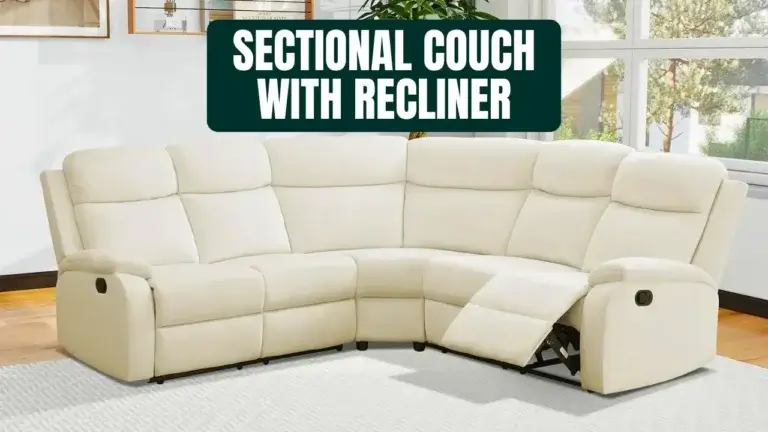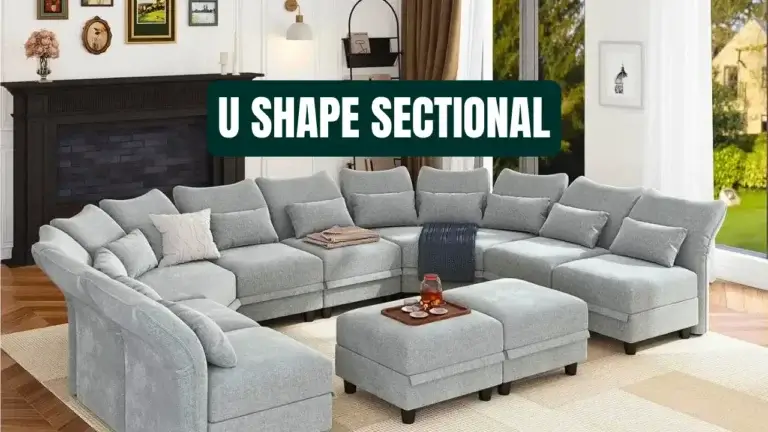Introduction
If your living room feels a little lifeless, it might just be missing a touch of green. Indoor plants can transform any dull corner into a cozy, vibrant space full of life. They not only add visual interest and freshen the air but also create a sense of calm and connection to nature—something we all need a bit more of these days. But not all houseplants are created equal, especially when it comes to their looks, size, and care requirements. That’s why we’ve rounded up the 10 best indoor plants for living room that combine beauty, ease of maintenance, and space-friendly charm. Whether you’re a green thumb or a total beginner, there’s something on this list for you.
🪴 10 Best Indoor Plants for Living Room – Cost & Care Calculator
Choose a popular indoor plant to see its estimated setup cost and care instructions. Find the perfect greenery for your living space!
10 Best Indoor Plants for Living Room
1. Snake Plant (Sansevieria trifasciata)
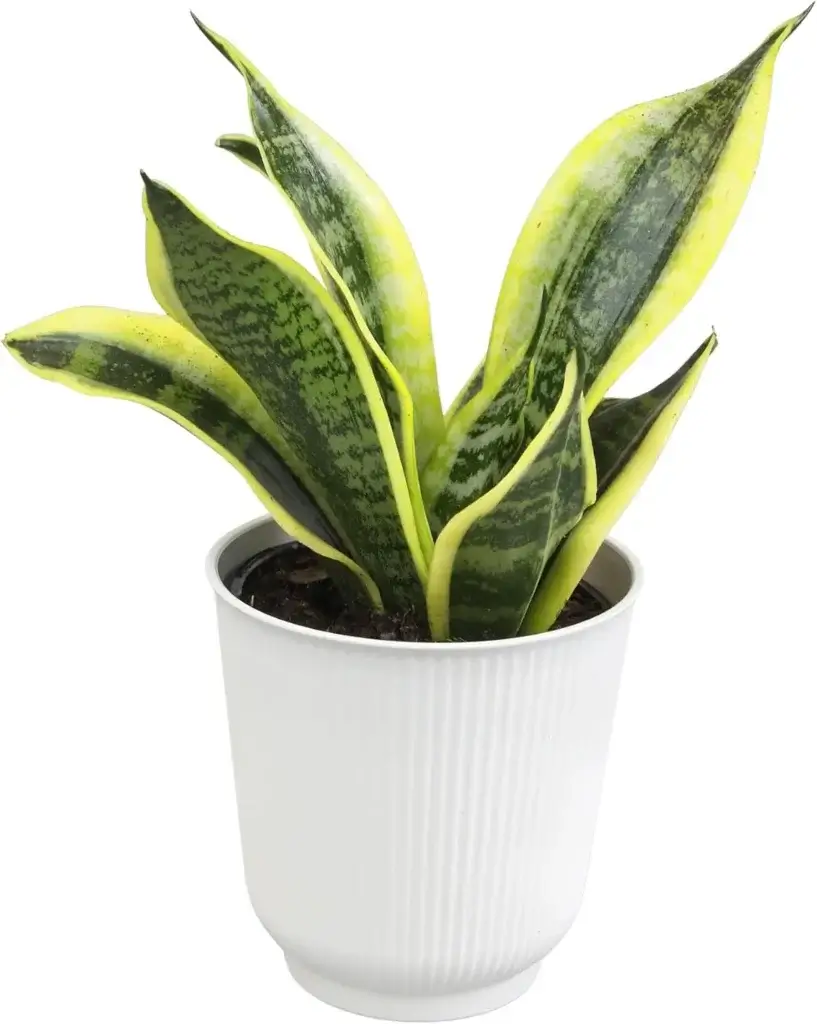
Source: Amazon
Overview and Appearance
Also known as Mother-in-Law’s Tongue, the Snake Plant stands tall and proud with its stiff, upright leaves that are sword-like and typically banded in green with yellow or white edges. It’s one of the most architectural houseplants you can get, perfect for adding structure and height to your living room decor.
This plant’s unique appearance can complement both modern and traditional spaces. Whether you’re styling a sleek loft apartment or a rustic living room, the Snake Plant fits right in. Its vertical growth makes it ideal for tight corners or next to furniture pieces where floor space is at a premium.
Benefits for Your Living Room
Besides its good looks, the Snake Plant is a champion air purifier. According to NASA studies, it can filter out toxins like formaldehyde, benzene, and xylene—common indoor pollutants. Plus, it releases oxygen at night, making your living space feel fresher and more breathable.
This plant also thrives on neglect. Seriously, if you’re the kind of person who forgets to water plants, this one will be your new best friend. It stores water in its leaves, so it can survive long dry spells.
Care Tips and Placement Ideas
- Light: Thrives in bright, indirect light but also tolerates low light.
- Water: Water only when the soil is completely dry—about once every 2-3 weeks.
- Soil: Well-draining cactus mix works great.
- Potting: Choose a pot with good drainage to avoid root rot.
Snake Plants look stunning near TV consoles, side tables, or even as floor plants beside your sofa. For a minimalist look, pair them with white or concrete pots.
Pros and Cons of Snake Plant (Sansevieria trifasciata)
Pros:
- Low Maintenance: Extremely easy to care for—perfect for beginners.
- Air Purifier: Removes toxins like formaldehyde, benzene, and xylene.
- Tolerates Low Light: Thrives in a wide range of lighting conditions.
- Stylish Appearance: Architectural, modern look suits any decor.
- Hardy: Can survive drought and irregular watering.
- Long Lifespan: Lives for years with minimal care.
- Pest-Resistant: Rarely attracts bugs or disease.
Cons:
- Slow Growth: Doesn’t grow quickly, so not ideal if you want rapid foliage.
- Toxic to Pets: Can be mildly toxic to cats and dogs if ingested.
- Root Rot Risk: Prone to root rot if overwatered.
- No Fragrance or Blooms: Unlike flowering plants, no blooms or scents.
- Sharp Leaves: Pointy tips might not be ideal in homes with small children.
Estimated Cost of Snake Plant
| Size | Pot Type | Estimated Price (USD) |
|---|---|---|
| Small (4–6 inches) | Plastic Nursery Pot | $8 – $15 |
| Medium (8–12 inches) | Decorative Ceramic Pot | $20 – $40 |
| Large (2–3 feet tall) | Planter with Stand | $45 – $100+ |
Prices may vary based on location, pot material, and plant maturity.
2. Monstera Deliciosa (Swiss Cheese Plant)
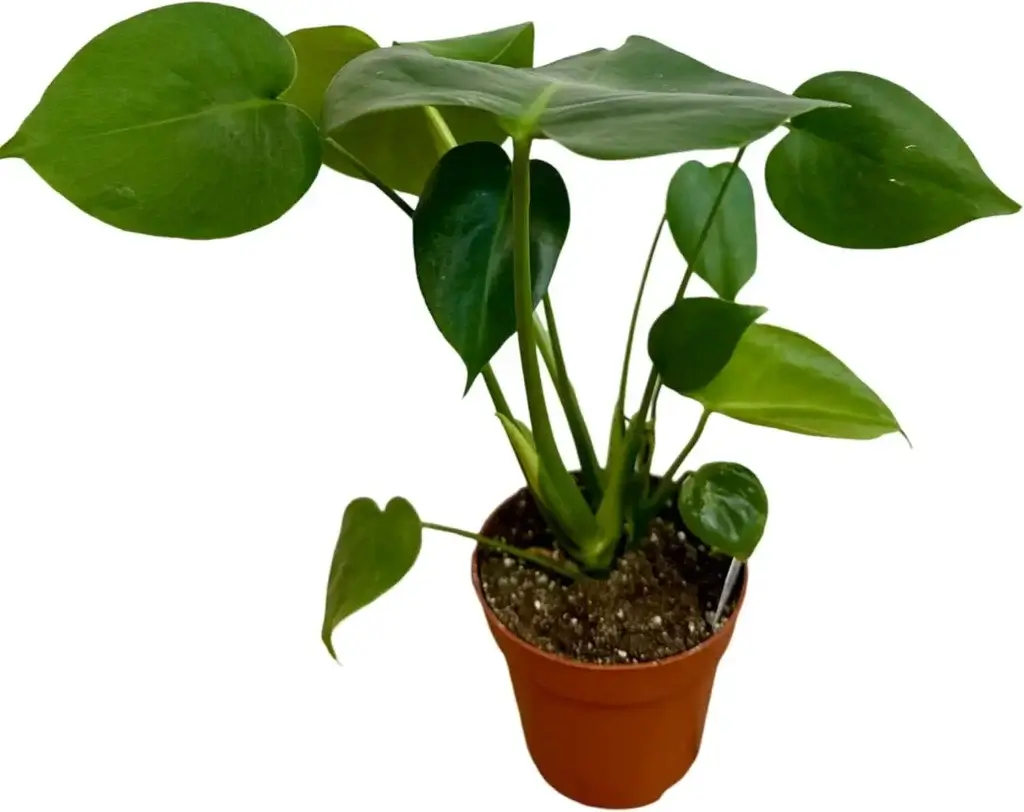
Why It’s a Statement Plant
Monstera Deliciosa is like the celebrity of the houseplant world. With its enormous, fenestrated (naturally split) leaves, it’s hard not to stop and admire this beauty. Its bold look adds drama and tropical vibes to any living room.
This plant grows quickly and can get quite large, making it ideal for open spaces or to serve as a focal point in your décor. The name “Swiss Cheese Plant” comes from the unique holes and splits in its leaves, which become more pronounced as the plant matures.
Light, Water, and Maintenance Needs
While it looks exotic, Monstera is surprisingly easy to care for:
- Light: Bright, indirect sunlight is ideal. Avoid direct sun which can scorch its leaves.
- Water: Water when the top inch of soil feels dry. Mist the leaves occasionally to boost humidity.
- Feeding: A balanced houseplant fertilizer once a month during spring and summer works wonders.
- Support: As it grows, Monstera may need a moss pole or trellis to climb.
It’s also pet-friendly in moderation but can cause mild irritation if chewed—so place it strategically if you have curious animals.
Design Tips for Styling Monstera Indoors
The Monstera’s large leaves give it a tropical feel that works great in boho, Scandinavian, and contemporary interiors. Place it in a woven basket or a bold ceramic planter. It also pairs beautifully with natural textures like rattan, linen, and wood.
If you want your living room to have a luxurious, jungle-inspired aesthetic, Monstera is your go-to.
Pros and Cons of Monstera Deliciosa (Swiss Cheese Plant)
Pros:
- Stunning Visual Appeal: Large, split leaves create a dramatic and tropical look.
- Air Purifying: Helps clean indoor air by filtering out common pollutants.
- Fast Growing: Grows quickly in ideal conditions, filling space beautifully.
- Easy Propagation: Can be propagated easily from stem cuttings.
- Improves Humidity: Large leaves help retain moisture in the air.
- Statement Plant: Works as a focal point in any living room decor.
Cons:
- Requires Space: Can become large and spread out, not ideal for tight areas.
- Needs Support: May require a moss pole or stake as it matures.
- Toxic to Pets: Leaves can be harmful if ingested by cats or dogs.
- Moderate Maintenance: Needs consistent watering and humidity.
- Leaf Damage: Susceptible to leaf tearing or browning if not properly cared for.
Estimated Cost of Monstera Deliciosa
| Size | Pot Type | Estimated Price (USD) |
|---|---|---|
| Small (6–8 inches) | Plastic Pot | $15 – $25 |
| Medium (1–2 feet) | Decorative Planter | $35 – $60 |
| Large (3+ feet) | Designer Pot or Basket | $75 – $150+ |
Prices depend on plant maturity, retailer, and container type.
3. ZZ Plant (Zamioculcas zamiifolia)

A Tough Beauty for Any Room
Meet the ZZ Plant—your no-fuss friend that thrives on being ignored. Its dark green, glossy leaves look like they’ve been waxed and polished. The upright, symmetrical growth makes it perfect for minimalistic, modern, or even professional interiors.
This plant is native to drought-prone regions of Africa, which means it has evolved to store water in its rhizomes (underground stems). So if you’re constantly forgetting to water your plants or if you travel often, this one is for you.
Low Maintenance, High Reward
Here’s what makes the ZZ Plant nearly indestructible:
- Light: It’s okay with low light but flourishes in bright, indirect light.
- Water: Only water when the soil is completely dry—overwatering is a no-no.
- Pests: Rarely affected by pests or diseases.
- Repotting: Doesn’t need frequent repotting, grows slowly but steadily.
Another bonus? It’s a strong air purifier and has been known to remove pollutants like xylene and toluene from indoor air.
Best Positions to Display It
ZZ Plants shine in corners, entryways, or next to bookshelves. Their upright growth adds vertical interest without taking up too much room. If you’re into symmetry, consider placing a pair of ZZ Plants on either side of a console table or fireplace.
Pros and Cons of ZZ Plant (Zamioculcas zamiifolia)
Pros:
- Extremely Low Maintenance: Thrives on neglect; perfect for beginners and busy individuals.
- Tolerates Low Light: One of the best plants for dim or windowless rooms.
- Air Purifier: Removes pollutants like xylene, toluene, and benzene.
- Stylish Glossy Leaves: Adds a sleek, modern touch to interiors.
- Drought-Resistant: Stores water in its rhizomes, allowing long gaps between watering.
- Pest-Resistant: Rarely affected by pests or diseases.
Cons:
- Toxic to Pets and Humans: All parts of the plant are toxic if ingested.
- Slow Growth: Doesn’t grow quickly, especially in low light.
- Root Rot Risk: Highly sensitive to overwatering; needs excellent drainage.
- No Blooms: Grown solely for its foliage, not flowering.
- Expensive for Size: Slightly pricier than other common houseplants, especially in decorative pots.
Estimated Cost of ZZ Plant
| Size | Pot Type | Estimated Price (USD) |
|---|---|---|
| Small (4–6 inches) | Plastic Nursery Pot | $10 – $20 |
| Medium (8–12 inches) | Decorative Ceramic Pot | $30 – $55 |
| Large (2+ feet tall) | Modern Planter or Basket | $60 – $120+ |
Prices can vary based on location, pot style, and maturity of the plant.
4. Pothos (Epipremnum aureum)
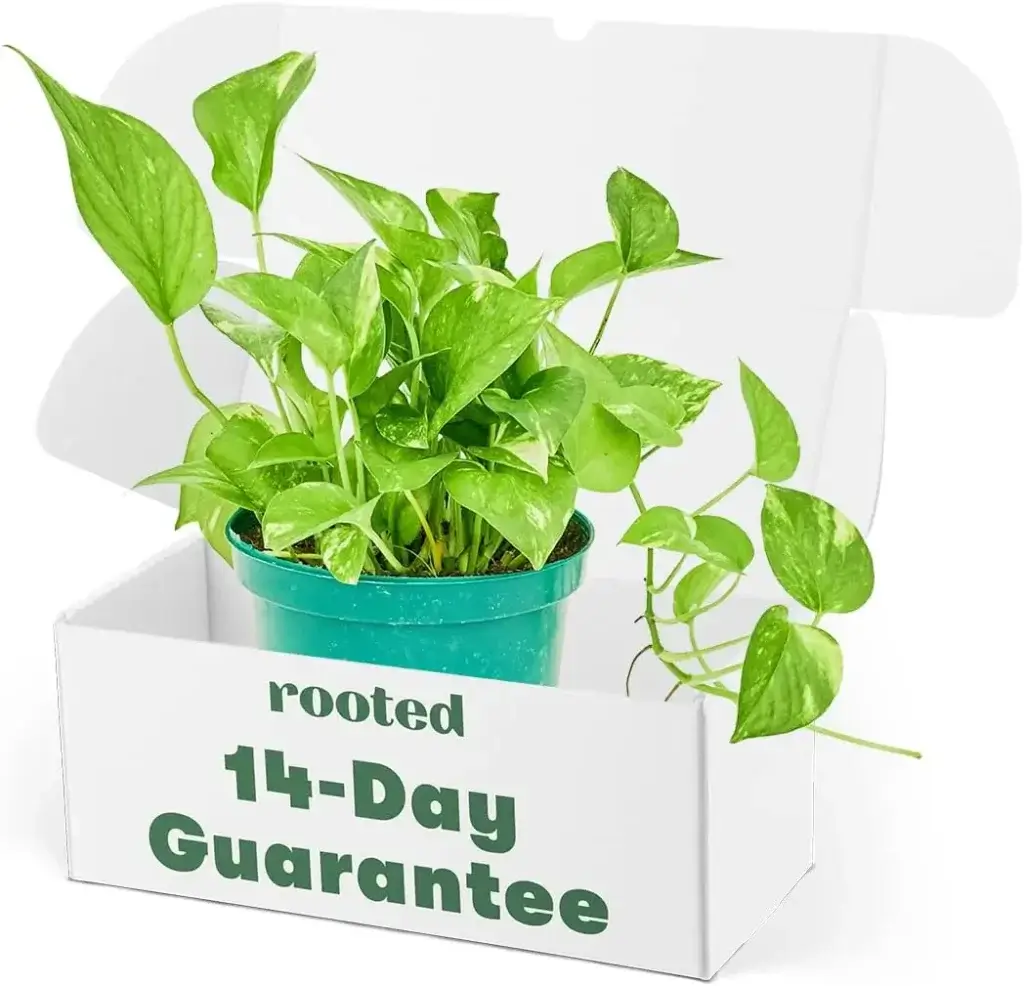
A Vine You’ll Fall in Love With
Pothos is often called the “Devil’s Ivy,” but there’s nothing devilish about this green gem. With its trailing vines and heart-shaped leaves, it adds instant lushness to your living space. Available in various colors from bright lime to creamy variegated tones, Pothos is both versatile and beautiful.
Its cascading nature makes it ideal for hanging baskets or high shelves. Plus, it’s one of the easiest plants to propagate—just snip and stick in water!
Air Purification and Aesthetic Appeal
Besides looking good, Pothos is known for purifying the air. It can filter out formaldehyde, benzene, and toluene, improving overall air quality.
This plant also adapts to different environments:
- Light: Happy in low to bright, indirect light.
- Water: Water when the top inch of soil is dry. Avoid soggy soil.
- Growth: It grows fast and can trail several feet if given the chance.
Creative Ways to Hang or Trail It
Get creative with Pothos! Drape it over bookshelves, let it hang from macramé plant holders, or trail along curtain rods. You can even wrap it around indoor ladders or frames for an artsy green touch. It brings a jungle feel without the hassle.
Pros and Cons of Pothos (Epipremnum aureum)
Pros:
- Extremely Easy to Grow: Ideal for beginners; thrives even in poor conditions.
- Fast Growing: Grows quickly and can be trained to trail or climb.
- Air Purifying: Removes indoor toxins like formaldehyde and carbon monoxide.
- Versatile Display: Can be hung, placed on shelves, or potted in hanging baskets.
- Variety of Colors: Comes in golden, marble, neon, and jade varieties to suit any decor.
- Easy to Propagate: Cuttings root easily in water or soil.
Cons:
- Toxic to Pets: Leaves can cause irritation if ingested by cats or dogs.
- Leggy in Low Light: May lose fullness and become sparse without adequate lighting.
- Root Bound Quickly: Grows fast and may require frequent repotting.
- No Blooms Indoors: Rarely flowers when grown indoors.
- Water Sensitivity: Overwatering can lead to root rot; underwatering causes wilting.
Estimated Cost of Pothos
| Size | Pot Type | Estimated Price (USD) |
|---|---|---|
| Small (4–6 inches) | Plastic Hanging Pot | $8 – $15 |
| Medium (Trailing 12″) | Decorative Ceramic Pot | $18 – $30 |
| Large (Full Trail) | Designer Hanging Basket | $35 – $60+ |
Pothos are very budget-friendly and commonly available in nurseries and home stores.
5. Fiddle Leaf Fig (Ficus lyrata)

The Instagram-Famous Living Room Upgrade
There’s a reason every design influencer has a Fiddle Leaf Fig in their living room. With its large, glossy, violin-shaped leaves, this plant is a statement-maker. Whether placed in a corner or by a window, it elevates the space like a piece of living art.
While it demands a bit more attention than others on this list, the payoff is totally worth it. A mature Fiddle Leaf Fig can grow over 6 feet tall and is perfect for making a dramatic statement.
How to Keep It Thriving
This plant can be finicky but manageable with the right care:
- Light: Loves bright, indirect light. Rotate regularly for even growth.
- Water: Keep soil consistently moist but not soggy. Don’t let it sit in water.
- Humidity: Appreciates higher humidity levels. Mist occasionally or use a humidifier.
Keep it away from drafts and sudden temperature changes. It may drop leaves if stressed but recovers quickly.
Balancing Size, Space, and Style
A tall Fiddle Leaf Fig looks best when placed in an empty corner or beside large furniture. Use a simple ceramic planter to let the plant shine. Avoid cluttering around it—this beauty deserves center stage.
Pros
- Visually striking with large, glossy, violin-shaped leaves — a great focal point for any room.
- Instagram-famous, trendy plant that elevates interior design.
- Can grow very tall (over 6 feet), making it a dramatic statement piece.
- Adds a natural, artistic vibe to living spaces.
- Recovers quickly from leaf drop if cared for properly.
Cons
- Requires bright, indirect light and regular rotation for even growth.
- Needs consistent moisture without overwatering; soil should not stay soggy.
- Prefers higher humidity; may need misting or a humidifier.
- Sensitive to drafts and sudden temperature changes.
- More finicky and high-maintenance compared to other houseplants.
- Needs ample space to avoid clutter and look its best.
Estimated Cost Details
| Size | Pot Type | Estimated Price (USD) |
|---|---|---|
| Small (1-2 ft) | Plastic nursery | $30 – $50 |
| Medium (3-4 ft) | Ceramic | $75 – $120 |
| Large (5-6+ ft) | Decorative ceramic | $150 – $300+ |
6. Peace Lily (Spathiphyllum)
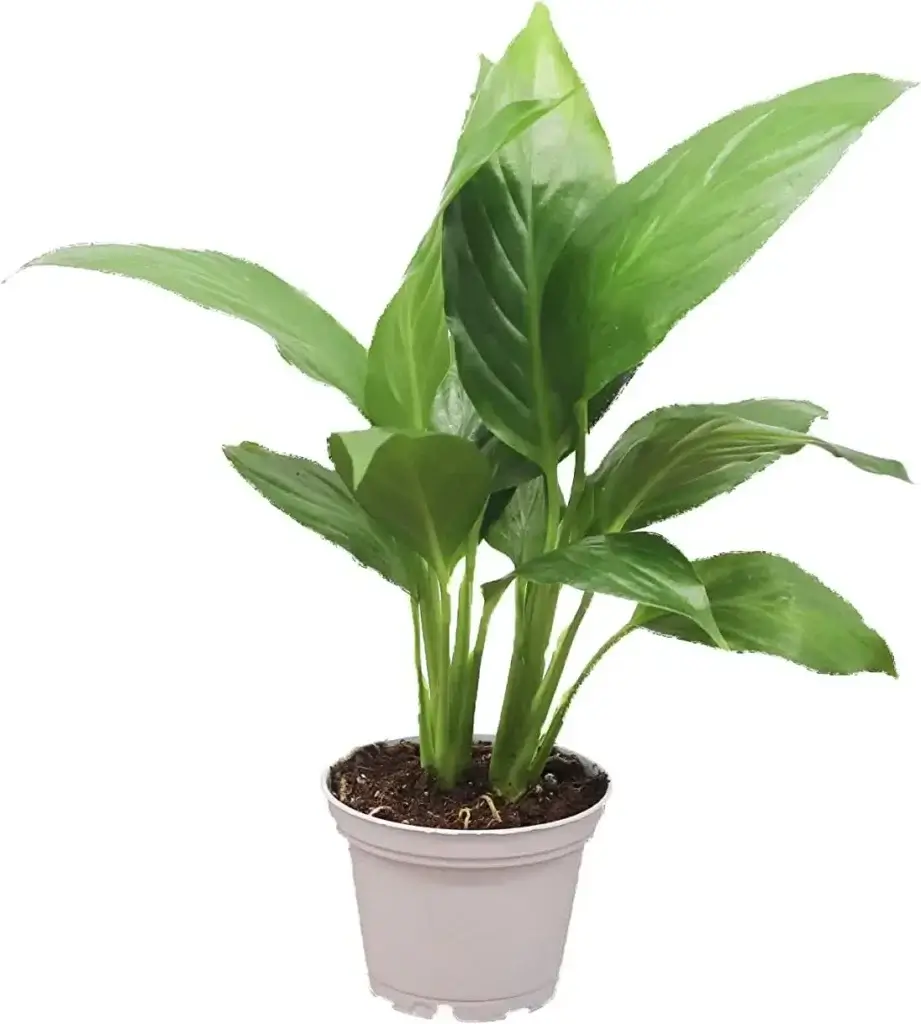
Grace and Clean Air in One Plant
The Peace Lily, with its elegant white blooms and lush green foliage, is a timeless favorite for indoor spaces. Its serene appearance brings a calming presence, making it a perfect addition to any living room. Beyond aesthetics, the Peace Lily is renowned for its air-purifying qualities, effectively removing toxins like formaldehyde and benzene from the air .
Caring for the Peace Lily Indoors
Peace Lilies thrive in bright, indirect light but can also tolerate lower light conditions, making them versatile for various room settings. However, to encourage blooming, placing them near a window with filtered sunlight is ideal . Overexposure to direct sunlight can scorch their leaves, so it’s best to avoid placing them in direct sun.
Watering should be done when the top inch of soil feels dry. These plants are sensitive to overwatering, which can lead to root rot. It’s also beneficial to maintain moderate humidity levels, as Peace Lilies prefer a slightly humid environment. Regularly wiping the leaves with a damp cloth not only keeps them dust-free but also allows the plant to breathe better.
Styling It With Furniture and Light
The Peace Lily’s graceful appearance complements various interior styles, from modern minimalist to classic traditional. Placing it in a decorative pot can enhance its visual appeal. It’s particularly striking when positioned near light-colored furniture or against neutral walls, where its white blooms can stand out. Additionally, grouping it with other indoor plants can create a lush, green corner in your living room.
Pros
- Elegant white blooms and lush green foliage create a calming and attractive indoor presence.
- Excellent air purifier, removing toxins such as formaldehyde and benzene.
- Thrives in bright, indirect light but tolerates low light, making it versatile for many indoor spaces.
- Low maintenance: requires watering only when the top inch of soil is dry.
- Complements a variety of interior styles and enhances decor with the right pot.
Cons
- Sensitive to overwatering, which can cause root rot.
- Overexposure to direct sunlight can scorch leaves.
- Prefers moderate humidity, which may be challenging in dry indoor environments.
- Needs regular leaf cleaning to maintain health and appearance.
| Size | Pot Type | Estimated Price (USD) |
|---|---|---|
| Small (6-8″) | Basic Plastic | $15 – $25 |
| Medium (10-12″) | Decorative Ceramic | $30 – $50 |
| Large (14″+) | Designer Planter | $60 – $100 |
7. Rubber Plant (Ficus elastica)
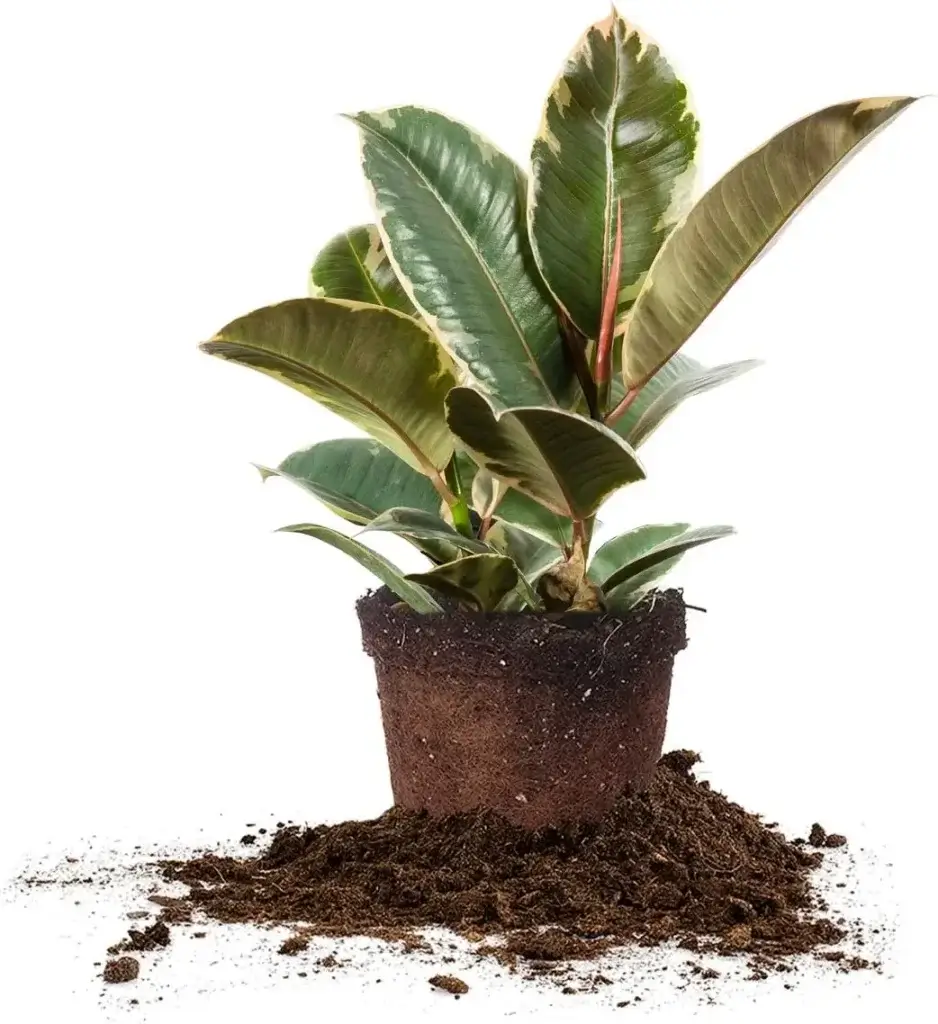
A Modern, Bold Plant Choice
The Rubber Plant is a statement piece, known for its large, glossy leaves and robust stature. Its deep green foliage adds a touch of sophistication to any living room, making it a favorite among interior designers. The plant’s upright growth habit makes it suitable for corners or as a focal point in room layouts.
Keeping It Happy and Healthy
Rubber Plants prefer bright, indirect light but can adapt to medium light conditions . It’s essential to avoid direct sunlight, which can scorch the leaves. Watering should be done when the top inch of soil feels dry, ensuring the plant isn’t sitting in water to prevent root rot.
Maintaining moderate humidity levels is beneficial, especially in drier climates. Regularly cleaning the leaves with a damp cloth helps the plant photosynthesize efficiently and keeps it looking vibrant. Fertilizing once a month during the growing season supports healthy growth.
Decorating Tips with Rubber Plants
The Rubber Plant’s bold foliage pairs well with contemporary and industrial interior designs. Placing it in a sleek, modern planter can enhance its aesthetic appeal. It’s particularly effective when positioned near large windows or in spacious rooms where it can grow without constraints. Combining it with other plants of varying heights can create an engaging indoor garden feel.
Pros and Cons of Rubber Plant (Ficus elastica)
Pros
- Large, glossy leaves add a bold, sophisticated look
- Adaptable to medium and bright indirect light
- Upright growth suitable for corners or as focal points
- Enhances contemporary and industrial decor styles
- Relatively easy to care for with moderate humidity and monthly fertilizing
Cons
- Sensitive to direct sunlight, which can scorch leaves
- Overwatering can cause root rot
- Requires regular leaf cleaning to maintain vibrancy
- Needs moderate humidity, which may be challenging in dry climates
- Can grow quite large, requiring ample space
Estimated Cost Details
| Size | Pot Type | Estimated Price (USD) |
|---|---|---|
| Small (1-2 ft) | Plastic | $20 – $35 |
| Medium (3-4 ft) | Ceramic | $40 – $70 |
| Large (5+ ft) | Decorative Planter | $80 – $150 |
8. Areca Palm (Dypsis lutescens)
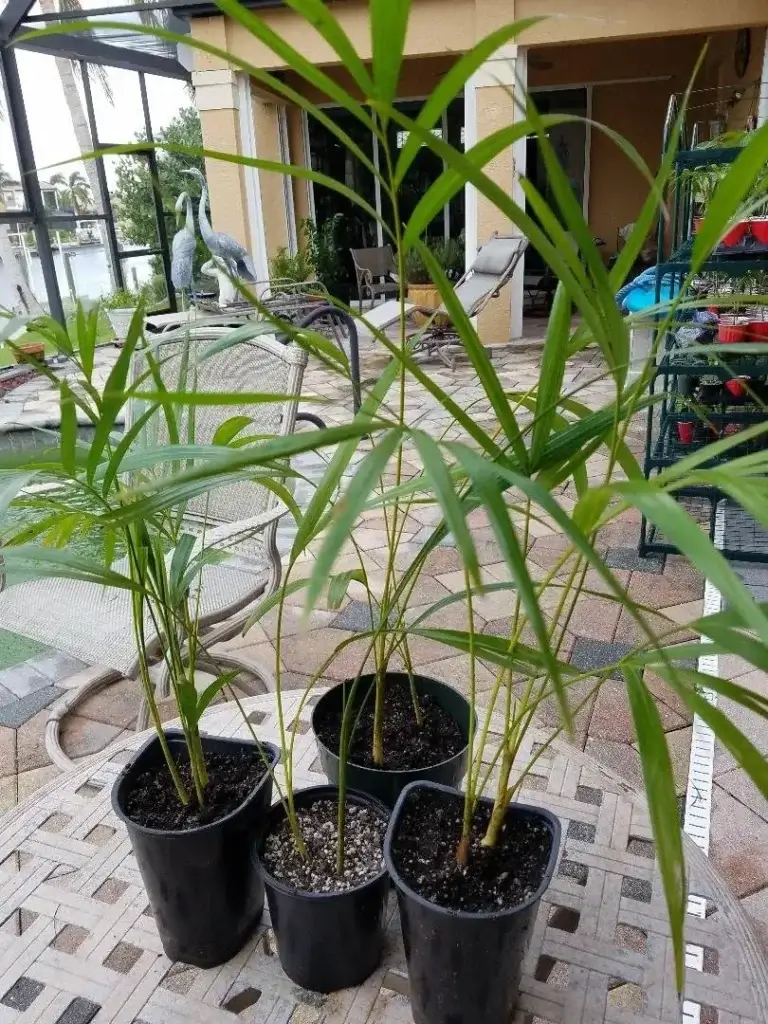
Bring a Tropical Vibe Home
The Areca Palm, also known as the Butterfly Palm, introduces a tropical ambiance to indoor spaces with its feathery fronds and graceful arching stems. Its lush appearance adds a sense of tranquility and relaxation, reminiscent of beachside resorts.
Watering and Sunlight Needs
Areca Palms thrive in bright, indirect light and prefer a consistent watering schedule. It’s crucial to keep the soil moist but not soggy, as overwatering can lead to root issues. These palms also appreciate higher humidity levels, making them suitable for rooms with natural moisture or those equipped with humidifiers.
Regularly misting the leaves can help maintain the desired humidity and keep the fronds looking fresh. Fertilizing during the growing season supports healthy growth and vibrant foliage.
Arranging for Maximum Impact
Due to its size and spread, the Areca Palm is best suited for larger living rooms or open spaces. Placing it in a decorative pot can enhance its visual appeal. It’s particularly striking when positioned near seating areas or as a natural divider between different sections of a room. Pairing it with other tropical plants can create a cohesive, lush indoor garden.
Pros and Cons of Areca Palm (Dypsis lutescens)
Pros:
- Adds a tropical, relaxing ambiance to indoor spaces.
- Lush, feathery fronds enhance room aesthetics.
- Helps increase humidity, benefiting dry indoor environments.
- Acts as a natural room divider or focal point.
- Thrives in bright, indirect light, common in many homes.
- Supports healthy growth with regular fertilizing.
Cons:
- Requires consistent watering—soil must be moist but not soggy.
- Sensitive to overwatering, which can cause root rot.
- Needs higher humidity levels, which may require misting or humidifiers.
- Best suited for larger rooms due to size and spread.
- May need occasional maintenance to keep fronds fresh.
| Size | Pot Type | Estimated Price (USD) |
|---|---|---|
| Medium-Large | Decorative Ceramic | $50 – $120 |
| Large | Woven Basket | $80 – $150 |
| Large | Modern Planter | $100 – $180 |
9. Spider Plant (Chlorophytum comosum)
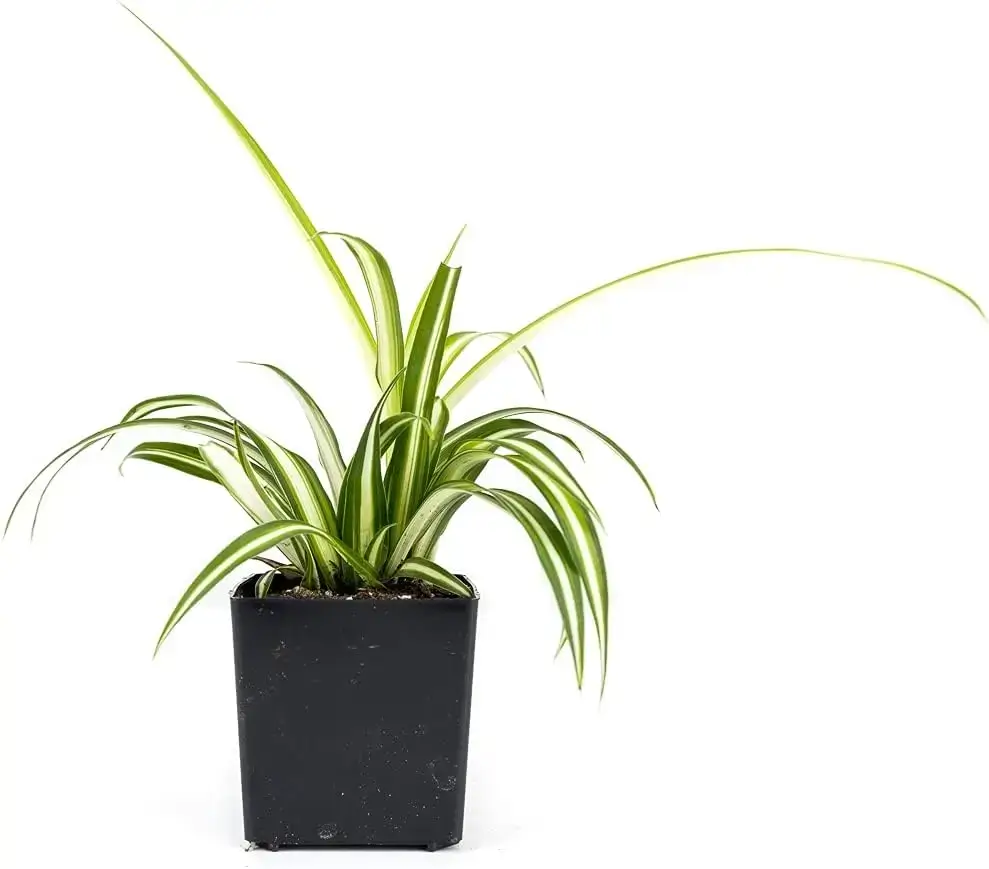
Perfect for Beginners
The Spider Plant is renowned for its adaptability and ease of care, making it an excellent choice for novice plant owners. Its arching leaves and cascading plantlets add a dynamic visual element to any room.
Propagation and Display Ideas
One of the Spider Plant’s unique features is its ability to produce “babies” or plantlets, which dangle from the mother plant. These can be easily propagated by placing them in water or soil until roots develop . This characteristic allows for creative display options, such as hanging baskets or elevated shelves.
The plant thrives in bright, indirect light but can tolerate lower light conditions. Watering should be done when the soil feels dry to the touch, ensuring the plant isn’t overwatered.
Why It’s Loved in Modern Homes
Spider Plants fit seamlessly into various interior styles, from bohemian to minimalist. Their cascading nature makes them ideal for hanging planters, adding vertical interest to spaces. Additionally, their air-purifying qualities contribute to a healthier indoor environment.
Pros
- Very easy to care for, ideal for beginners
- Adaptable to different light conditions (bright indirect to lower light)
- Produces plantlets for easy propagation and creative displays
- Visually appealing with arching leaves and cascading “babies”
- Fits well with many interior styles (bohemian, minimalist, etc.)
- Acts as an air purifier, improving indoor air quality
Cons
- Can be prone to overwatering if not carefully monitored
- Needs occasional propagation management as plantlets can multiply quickly
- May require hanging baskets or special display arrangements to fully appreciate cascading growth
| Size | Pot Type | Estimated Price (USD) |
|---|---|---|
| Small (4″) | Plastic | $5 – $10 |
| Medium (6″) | Ceramic | $15 – $25 |
| Large (8″+) | Hanging Basket | $30 – $50 |
10. Chinese Evergreen (Aglaonema)

A Splash of Color Indoors
The Chinese Evergreen is celebrated for its vibrant foliage, which comes in various shades of green, silver, pink, and red. Its colorful leaves add a lively touch to indoor spaces, making it a popular decorative plant.
Adapting to Low Light Conditions
Chinese Evergreens are versatile in their light requirements, thriving in low to bright indirect light. Varieties with darker green leaves can tolerate dimmer conditions, while those with more colorful variegation prefer brighter light to maintain their vivid hues . Watering should be done when the top inch of soil feels dry, and it’s essential to avoid overwatering.
These plants are also known for their air-purifying abilities, contributing to a healthier living environment.
Matching It With Room Decor
The Chinese Evergreen’s colorful foliage makes it a standout piece in any room. Pairing it with neutral-colored pots can highlight its vibrant leaves. It’s particularly effective when placed on side tables, shelves, or as part of a plant cluster, adding depth and interest to your living room decor.
Pros
- Vibrant, colorful foliage adds decorative appeal indoors
- Thrives in a wide range of light conditions, including low light
- Air-purifying qualities improve indoor air quality
- Variety of leaf colors allows for aesthetic versatility
- Suitable for placement on shelves, side tables, or plant clusters
Cons
- Varieties with brighter variegation require more light to maintain color
- Overwatering can easily damage the plant
- Some types may be toxic to pets if ingested
| Size | Pot Type | Estimated Price (USD) |
|---|---|---|
| Small (4″) | Plastic | $8 – $15 |
| Medium (6″) | Ceramic | $20 – $35 |
| Large (8″+) | Decorative Pot | $40 – $70 |
Conclusion
Indoor plants do more than just fill empty corners—they breathe life, personality, and warmth into your living room. From the low-maintenance charm of the ZZ Plant to the dramatic elegance of the Fiddle Leaf Fig, there’s a plant out there for every style, light condition, and level of experience. These ten selections offer a diverse range of aesthetics and practical benefits like air purification, mood-boosting greenery, and improved acoustics.
When choosing the best indoor plant for your living room, think about the atmosphere you want to create. Looking for calm and peaceful? Go for the Peace Lily. Want a lush jungle vibe? Pair Monstera with Pothos and Areca Palm. Prefer structure and minimalism? The Snake Plant or Rubber Plant fits right in. The key is to choose plants that suit your lifestyle, your room’s lighting, and your aesthetic vision.
Don’t forget to play with planters, placements, and groupings to make your living room feel like a living masterpiece. Whether you’re going for cozy, chic, boho, or modern, there’s always a way to incorporate greenery that transforms your space into a sanctuary.
So what are you waiting for? Bring one (or three) of these beauties home and let nature do its magic indoors.
FAQs
1. What are the easiest indoor plants to care for?
If you’re new to houseplants or don’t have time for plant parenting, opt for Snake Plant, ZZ Plant, or Pothos. These plants are low-maintenance, drought-tolerant, and forgiving even if you forget to water them.
2. How often should I water my living room plants?
Watering frequency depends on the plant type and environmental conditions, but a general rule is to water when the top 1–2 inches of soil are dry. Always check soil moisture before watering to avoid root rot.
3. Which plants purify the air the best?
Peace Lily, Snake Plant, Rubber Plant, and Spider Plant are excellent air purifiers. NASA studies show they help remove toxins like formaldehyde, benzene, and carbon monoxide from indoor spaces.
4. Can indoor plants survive in low light?
Yes! Some great low-light tolerant plants include the ZZ Plant, Chinese Evergreen, Snake Plant, and Peace Lily. They thrive even in dim corners of your living room.
5. What’s the best way to style plants in a small space?
Use vertical space! Hang Pothos in baskets, place Spider Plants on wall shelves, or group smaller plants like Chinese Evergreen and ZZ Plant on side tables. Mirrors behind plants can also create the illusion of more greenery.

My name is Mahi Uddin, and I’m a blog writer with over two years of experience specializing in creating engaging, informative content using AI tools. I contribute to InExDecor.com, where I share creative ideas and practical tips for transforming interior and exterior spaces into beautiful, functional environments. With a passion for storytelling and a knack for blending creativity with technology, I strive to craft blogs that not only inform but also inspire readers. When I’m not writing, you can find me exploring design trends or enjoying a good book with a cup of coffee.

